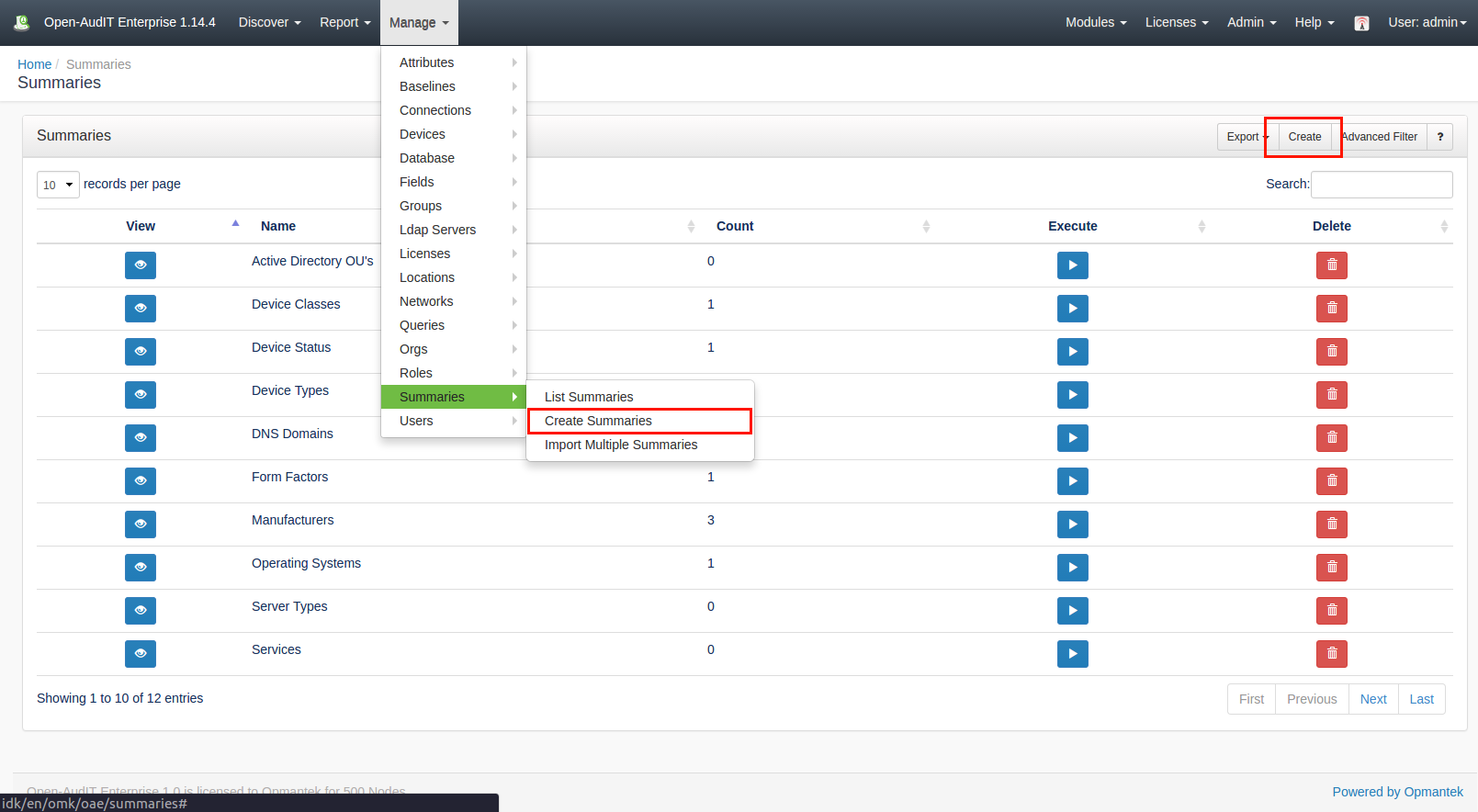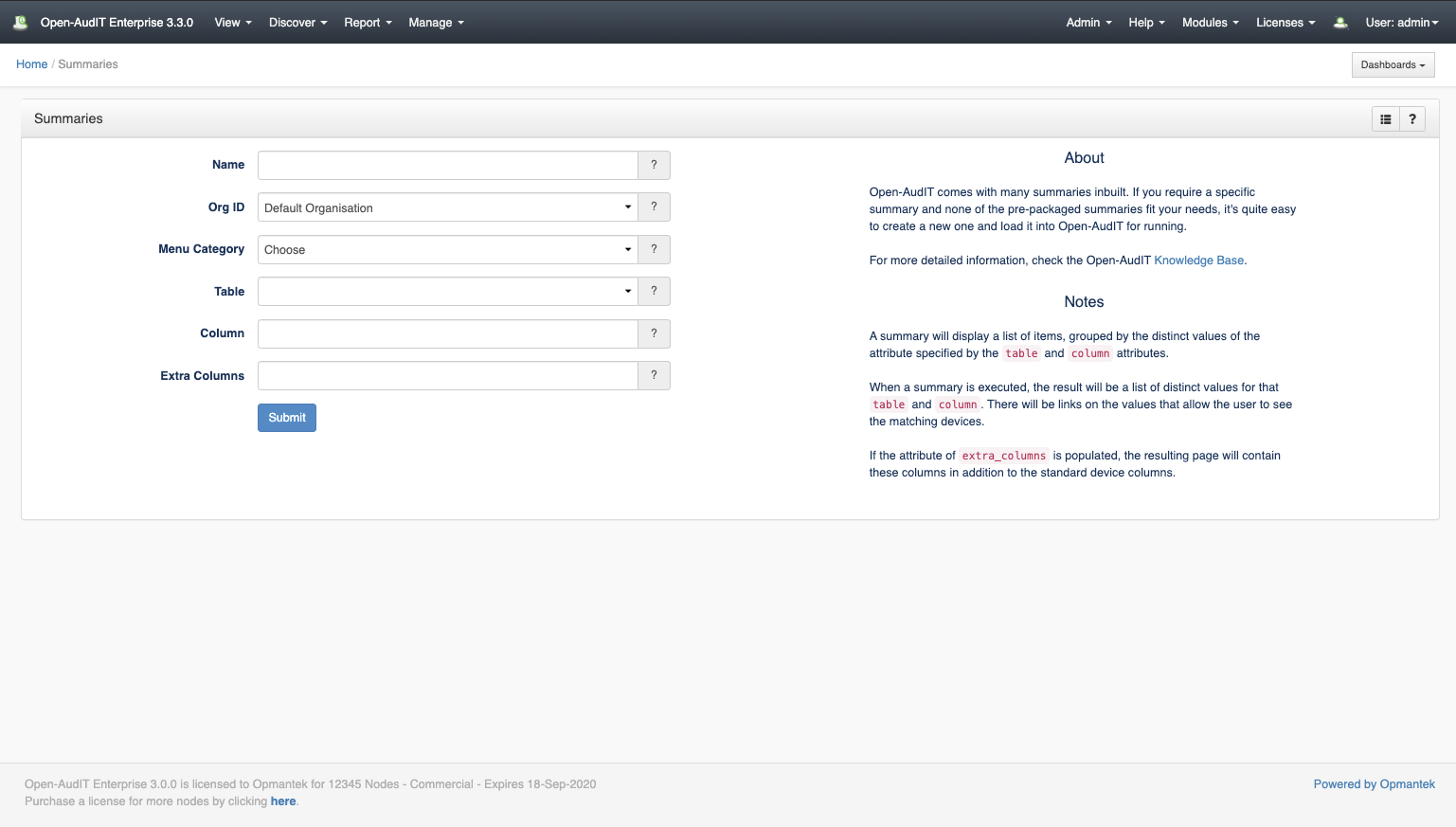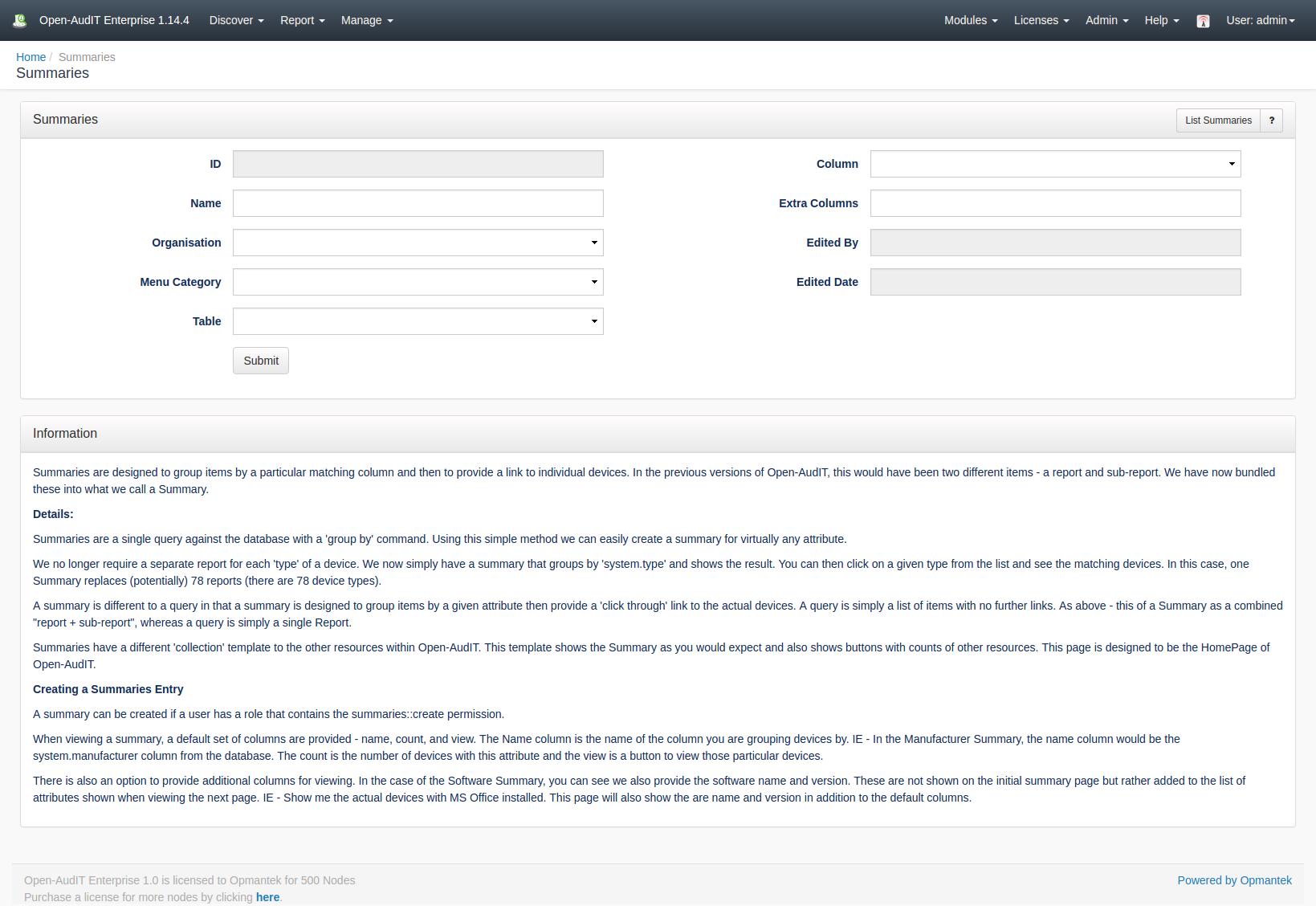...
A summary can be created using the web interface if a user has a role that contains the summaries::create permission. Go to menu: Manage -> Summaries -> Create Summaries. There is also a create "+" button on the collection page.
...
There is also an option to provide additional columns for viewing. In the case of the Software Summary, you can see we also provide the software name and version. These are not shown on the initial summary page but rather added to the list of attributes shown when viewing the next page. IE - Show me the actual devices with MS Office installed. This page will also show the are name and version in addition to the default columns.
View Summary Details
Go to menu: Manage -> Summaries -> List Summaries.
...
You can also edit or delete the summary.
Database Schema
The schema for the database is below. It can also be found in the application if the user has database::read permission by going to menu: Manage Admin -> Database -> List DatabaseTables, then clicking on the "summaries" table.
| Code Block | ||||||
|---|---|---|---|---|---|---|
| ||||||
CREATE TABLE `summaries` ( `id` int(10) unsigned NOT NULL AUTO_INCREMENT, `name` varchar(100) NOT NULL DEFAULT '', `org_id` int(10) unsigned NOT NULL DEFAULT '1', `table` varchar(100) NOT NULL DEFAULT '', `column` varchar(100) NOT NULL DEFAULT '', `extra_columns` text NOT NULL, `edited_by` varchar(200) NOT NULL DEFAULT '', `edited_date` datetime NOT NULL DEFAULT '2000-01-01 00:00:00', PRIMARY KEY (`id`) ) ENGINE=InnoDB AUTO_INCREMENT=13 DEFAULT CHARSET=utf8; |
A typical entry looks as below.
| Code Block | ||||||
|---|---|---|---|---|---|---|
| ||||||
id: 6
name: Manufacturers
org_id: 1
table: system
column: manufacturer
extra_columns: system.model
edited_by: system
edited_date: 2000-01-01 00:00:00 |
...
The API routes below are usable from both a JSON Restful API and the web interface. The Web application routes are specifically designed to be called from the web interface (a browser).
API Routes
Request Method | ID | Action | Resulting Function | Permission Required | URL Example | Notes | Example Response |
|---|---|---|---|---|---|---|---|
| POST | n |
| create | summaries::create | /summaries | Insert a new summaries entry. | summary_create.json | ||
| GET | y |
| read | summaries::read | /summaries/{id} | Returns a summaries details. | summary_read.json | |
| PATCH | y |
| update | summaries::update | /summaries/{id} | Update an attribute of a summaries entry. | summary_update.json | |
| DELETE | y |
| delete | summaries::delete | /summaries/{id} | Delete a summaries entry. | summary_delete.json | |
| GET | n |
| collection | summaries::read | /summaries | Returns a list of summaries. | summary_collection.json | ||
| POST | n | import | import | summaries::create | /summaries/import | Import multiple connections using a CSV. |
| GET | y | execute | execute | summaries::read | /summaries/{id}/execute | Execute (run) a summary and show the result. | summary_execute.json |
Web Application Routes
Request Method | ID | Action | Resulting Function | Permission Required | URL Example | Notes |
|---|---|---|---|---|---|---|
| GET | n | create | create_form | summaries::create | /summaries/create | Displays a standard web form for submission to POST /summaries. |
| GET | y | update | update_form | summaries::update | /summaries/{id}/update | Show the summaries details with the option to update attributes using PATCH to /summaries/{id} |
| GET | n | import | import_form | summaries::create | /summaries/import | Displays a standard web form for submission to POST /summaries/import. |
...





